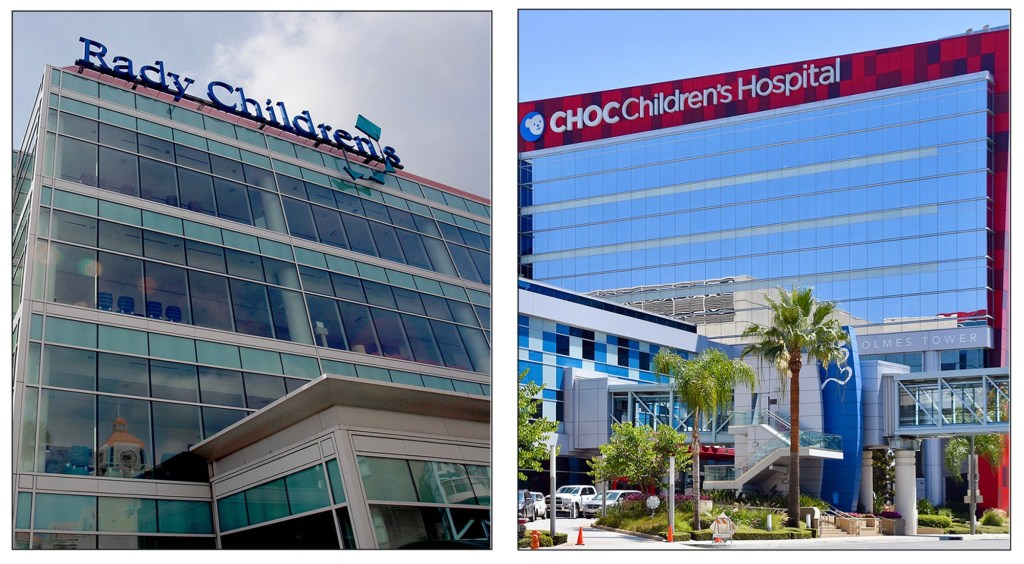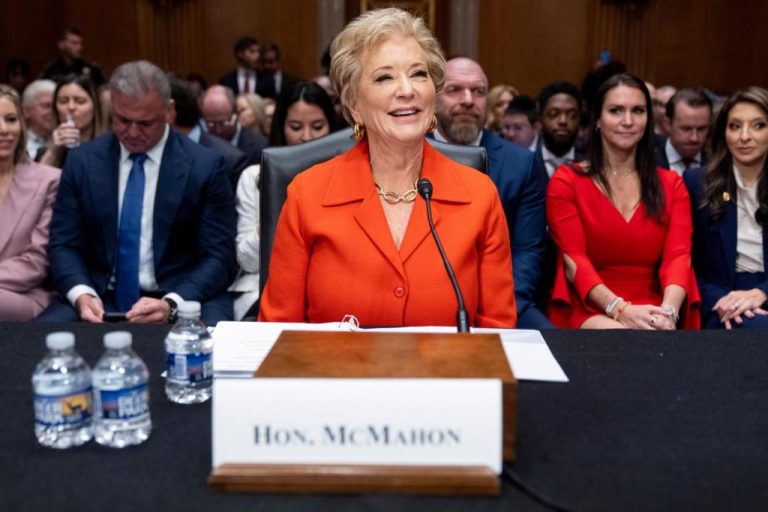

California Attorney General Rob Bonta has approved the merger of Rady Children’s Hospital and Children’s Hospital of Orange County, clearing the way for the pair to operate jointly under the name Rady Children’s Health, an organization that, pulling resources in San Diego and Orange counties together, would span a region home to more than 1.3 million children.
When the two hospitals jointly announced the pact in December, leaders from both organizations said they would maintain their existing governing boards that would operate under the umbrella of a new “parent” company that pays homage to the hundreds of millions of dollars that Ernest and Evelyn Rady have contributed in San Diego.
For two years after the agreement takes effect, Dr. Patrick Frias, Rady’s CEO, Kimberly Chavalas Cripe, CHOC’s current president and chief executive, would co-manage Rady Children’s Health. Cripe would then retire after more than three decades with CHOC.
But the merger of these two nonprofit corporations requires approval from the state’s top lawyer and law enforcement official, and that sign-off comes with 24 conditions whose details and specifications fill a 24-page document released in final form by the AG this week.
Many of those conditions nail down technical details, requiring continued pursuit of matters — such as hospital licensure and Medi-Cal participation — that both organizations could not reasonably change without significant turmoil. But others, such as specifying the minimum amount of charity care that must be provided to the communities that the hospitals serve over the 10 years, appear designed to make sure that the merged organization remains true to the mission of serving all residents in San Diego and Orange counties, not just those with excellent medical coverage.
The joint organization is required to spend a total of at least $147 million in “community benefit services” per year with annual increases of that baseline set at 3.55 percent for Rady and 4 percent for CHOC’s hospitals in Orange and Mission Viejo. That amount includes a total of $20 million in annual charity care, defined as medical care costs for which the organizations were not reimbursed.
All organizations are required to maintain financial assistance policies that are “no less favorable” than those currently employed at Rady Children’s for the next 10 years.
Community benefits, which may include spending on a range of activities such as education, research and in-kind contributions to other charitable organizations, are a cornerstone of federal requirements for nonprofit health care organizations maintaining their tax-exempt statuses.
Long-term investments in both organizations’ physical plants is also spelled out, including $711 million and $571 million expenditures for new medical towers at CHOC hospitals and $1.6 billion for a new tower and “enabling projects,” now breaking ground on the northern edge of Rady’s Serra Mesa campus. An additional $175 million is specified for a new Rady mental health services building.
Bonta also gets quite specific about services, namely those that must continue to be provided at each of the three hospitals involved in the merger.
The agreement’s softest requirements specify how many beds must continue to exist at each entity. That’s 52 in intensive care, 139 in the intensive care newborn nursery, 249 general acute care, and 67 in acute psychiatry and skilled nursing at Rady and 388 total at CHOC hospitals. Both organizations also run the neonatal intensive care units at affiliated hospitals, and those locations are also listed, complete with street addresses and existing bed capacities.
Even the language services that must be made available to patients and their families is spelled out, specifying a language hotline with financial assistance program documents required to be made available in “English, Spanish, Arabic, Vietnamese, Tagalog, Somali, Farsi, Korean and Mandarin.”
A list of 36 medical specialties, from allergy and immunology to urology, are also listed as existing services that must be maintained for the next 10 years. Any “suspension, relocation or diversion” of this core set requires prior attorney general approval.
In a statement provided Thursday, Rady says that the conditions “are now under review by leadership and the Boards of Directors of both organizations.”
“If the conditions are determined acceptable, CHOC and Rady Children’s will begin the process to finalize the merger of its parent companies.”
The attorney general’s conditional approval document includes the full affiliation agreement between Rady and CHOC attached as an exhibit. Many times longer than Bonta’s list of conditions, this document contains more than 300 additional pages of detail on the specifics of the merger, noting, for example, that the two organization’s medical staffs will remain independent and will continue to operate under their existing bylaws.
Many will wonder what existing hospitals will be called if the merger takes effect. This question is not directly answered; the affiliation agreement calls for the two organizations to jointly develop a “health system branding plan” that incorporates the organization’s new name, Rady Children’s Health, but that also “preserves the recognition, affinity and brand value” of “the legal names of CHOC, CHOC at Mission and (Rady Children’s Hospital San Diego).”
The agreement also covers how this merger would end. If all parties agree in writing to “unwind the affiliation,” they would work together to split assets “in a manner intended to permit the parties to operate after termination as standalone enterprises consistent with their respective missions and purposes.”






